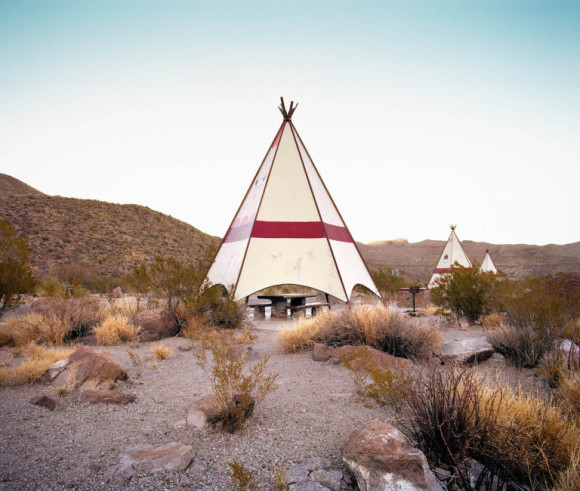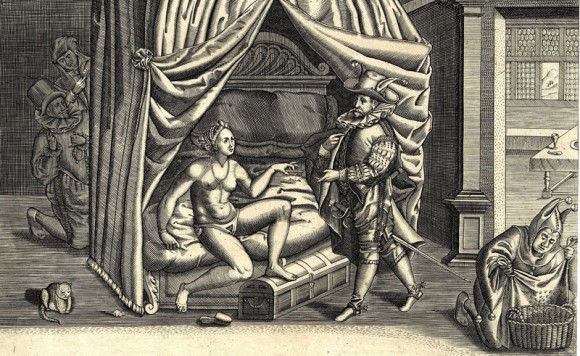Disappearing Kitschy Americana Rest Stops
As the sun begins to tease us, so does the dream of a long road trip. Sun visors and sun glasses, strange isolated rest stops dotting the endless hot asphalt, and the promise of a destination…
From Hyperallergic,
Documenting the Disappearing Rest Stops of the American West
by Carey Dunn
…“It’s strange the details you transparently absorb/When you think you’ll never see them again/things like curio shops/that i once despised/now i look on as curious beauty,” wrote singer-songwriter Joe Ely in his 1987 ode to the American road trip, Lord of the Highway. The sentiment applies to the kitschy Americana rest stops along Route 66, small structures with parking, picnic tables, and toilets, many of which are being replaced by fast food joints or demolished as states cut budgets.
While on a solo road trip from California to Texas in 2007, Austin-based photographer Ryann Ford became enamored with the quirky designs of these famous rest stops: faux covered-wagons in New Mexico, metal teepees along the Rio Grande. After learning that these rest stops were endangered, she spent years on the road photographing as many of them as possible, creating an archive of mid-century American design. The Last Stop: Vanishing Rest Stops of the American Roadside, forthcoming from PowerHouse Books, compiles hundreds of Ford’s images shot in New Mexico, Texas, California, Arizona, Utah, Nevada, Oklahoma, Missouri, Illinois, Minnesota, Iowa, Kansas, South Dakota, and Louisiana…”
For the rest, click here. These photos are spectacularly eerie and wonderful!
Share


